A rectangular loop of length 'l' and breadth 'b' is placed at a distance of x from an infinitely long wire carrying current 'i' such that the direction of current is parallel to breadth. If the loop moves away from the current wire in a direction perpendicular to it with a velocity 'v', the magnitude of the e.m.f. in the loop is: (μ0= permeability of free space)
To solve the problem, we need to find the induced electromotive force (e.m.f.) in a rectangular loop that is moving away from an infinitely long wire carrying current. The steps to derive the expression for the induced e.m.f. are as follows:
1. Understand the Setup:
- We have a rectangular loop with length l and breadth b.
- The loop is placed at a distance x from an infinitely long wire carrying current i.
- The loop moves away from the wire with a velocity v in a direction perpendicular to the wire.
2. Magnetic Field Due to the Wire:
- The magnetic field B at a distance r from an infinitely long straight wire carrying current i is given by:
B=μ0i2πr
- At the position of the loop, the magnetic field B1 at distance x is:
B1=μ0i2πx
- When the loop moves away, the distance becomes x+l. Thus, the magnetic field B2 at this new position is:
B2=μ0i2π(x+l)
3. Calculate the Change in Magnetic Field:
- The change in magnetic field as the loop moves from position x to x+l is:
ΔB=B1−B2=μ0i2πx−μ0i2π(x+l)
4. Induced e.m.f. Calculation:
- The induced e.m.f. E in the loop can be calculated using Faraday's law of electromagnetic induction, which states that the induced e.m.f. is equal to the rate of change of magnetic flux through the loop:
E=−dΦdt
- The magnetic flux Φ through the loop is given by:
Φ=B⋅A=B⋅(l⋅b)
- The induced e.m.f. can also be expressed as:
E=ΔB⋅l⋅v
- Substituting the values of B1 and B2:
E=(μ0i2πx−μ0i2π(x+l))⋅l⋅v
5. Final Expression:
- Factor out common terms:
E=μ0ilv2π(1x−1x+l)
- Simplifying the expression:
E=μ0ilv2π⋅((x+l)−xx(x+l))=μ0ilv2π⋅lx(x+l)
- Thus, the final expression for the induced e.m.f. is:
E=μ0ilbv2πx(x+l)
- We have a rectangular loop with length l and breadth b.
- The loop is placed at a distance x from an infinitely long wire carrying current i.
- The loop moves away from the wire with a velocity v in a direction perpendicular to the wire.
- The magnetic field B at a distance r from an infinitely long straight wire carrying current i is given by:
B=μ0i2πr
- At the position of the loop, the magnetic field B1 at distance x is:
B1=μ0i2πx
- When the loop moves away, the distance becomes x+l. Thus, the magnetic field B2 at this new position is:
B2=μ0i2π(x+l)
- The change in magnetic field as the loop moves from position x to x+l is:
ΔB=B1−B2=μ0i2πx−μ0i2π(x+l)
- The induced e.m.f. E in the loop can be calculated using Faraday's law of electromagnetic induction, which states that the induced e.m.f. is equal to the rate of change of magnetic flux through the loop:
E=−dΦdt
- The magnetic flux Φ through the loop is given by:
Φ=B⋅A=B⋅(l⋅b)
- The induced e.m.f. can also be expressed as:
E=ΔB⋅l⋅v
- Substituting the values of B1 and B2:
E=(μ0i2πx−μ0i2π(x+l))⋅l⋅v
- Factor out common terms:
E=μ0ilv2π(1x−1x+l)
- Simplifying the expression:
E=μ0ilv2π⋅((x+l)−xx(x+l))=μ0ilv2π⋅lx(x+l)
- Thus, the final expression for the induced e.m.f. is:
E=μ0ilbv2πx(x+l)
Topper's Solved these Questions
- BOOK - NARAYNACHAPTER - ELECTRO MAGNETIC INDUCTIONEXERCISE - C.U.Q 151videos
ELECTRO MAGNETIC INDUCTION
- BOOK - NARAYNACHAPTER - ELECTRO MAGNETIC INDUCTIONEXERCISE - Assertion & Reason11videos
ELECTRO MAGNETIC INDUCTION
- BOOK - NARAYNACHAPTER - ELECTRIC CHARGES AND FIELDSEXERCISE - EXERCISE -443videos
ELECTRIC CHARGES AND FIELDS
- BOOK - NARAYNACHAPTER - ELECTRO MAGNETIC WAVESEXERCISE - LEVEL-II(H.W)14videos
ELECTRO MAGNETIC WAVES
Similar Questions
Shows a long current carrying wire and two rectangular loops moving with of velocity v. Find the direction of current in each loop.
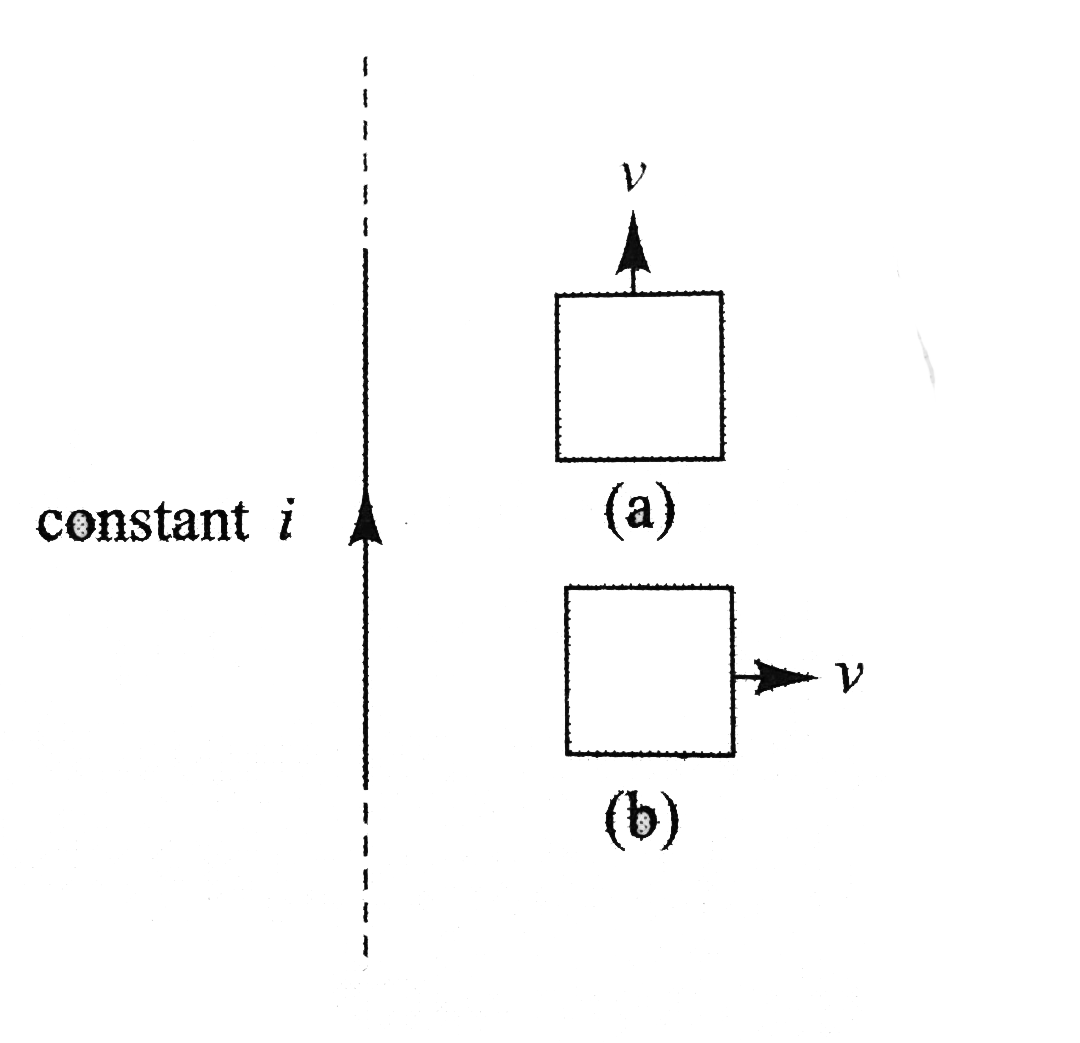 View Solution
View Solutiona rectangular loop, as shown in Fig. 3.66, moves away from an infinitely long wire carrying a current I. Find the emf induced in the rectangualr loop.
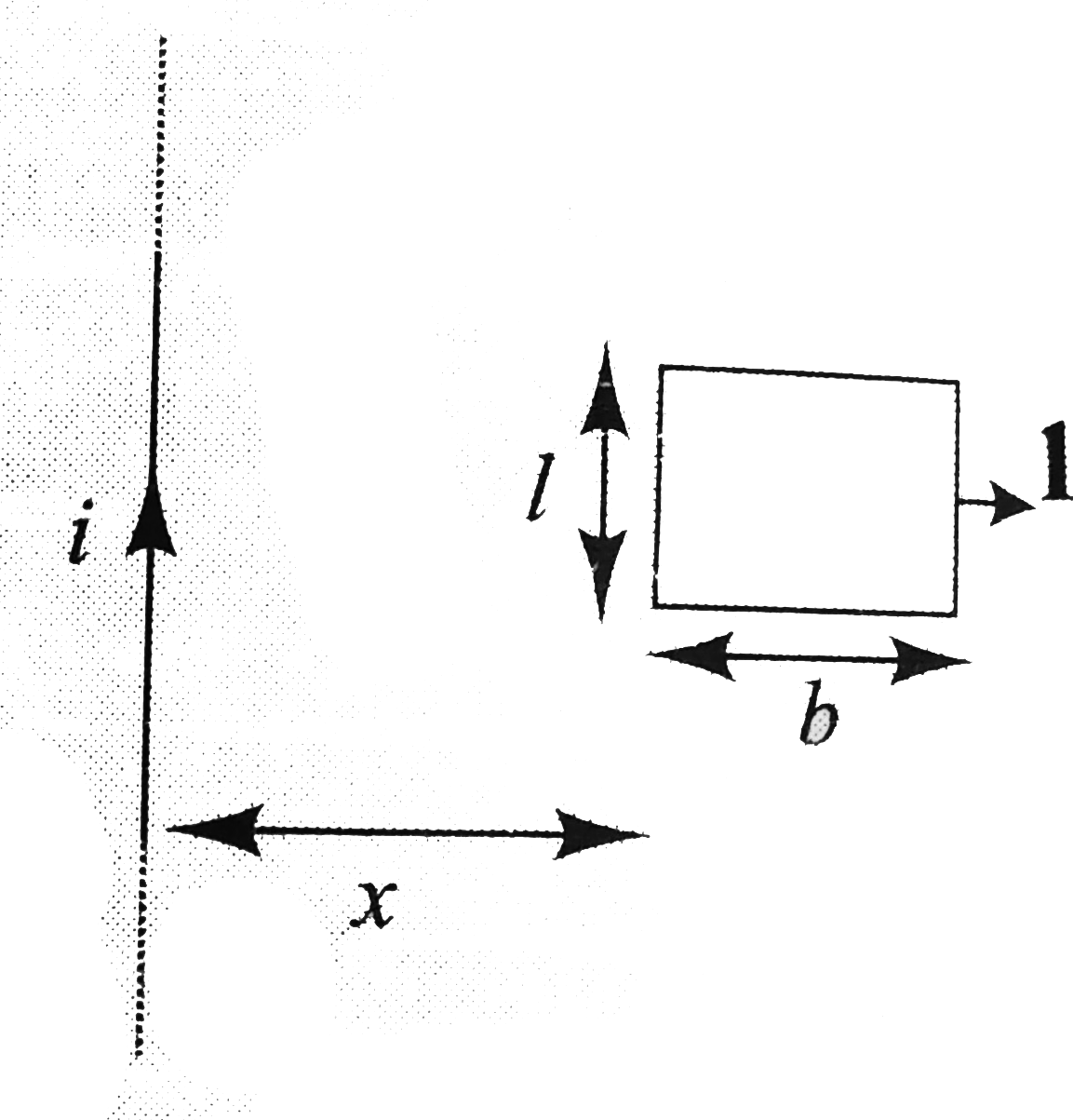 View Solution
View Solution
Knowledge Check
- Question 1 - Select One
A square loop of side a is placed at a distance a length away from a long wire carrying a current I1 . If the loop carries a current I2 as shown in the figure . Then the nature of the nature of the force and its amount is
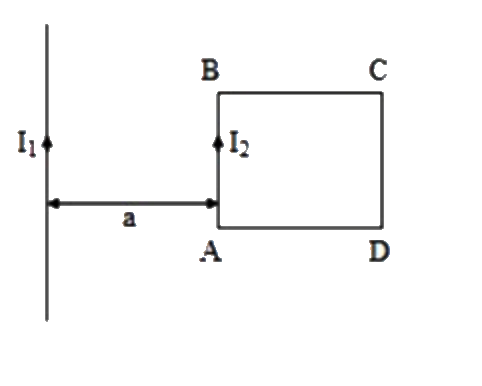 Aμ0I1I22πa, attractiveBμ0I1I24π, attractiveCμ0I1I24π, repulsiveDμ0I1I24πa, repulsive
Aμ0I1I22πa, attractiveBμ0I1I24π, attractiveCμ0I1I24π, repulsiveDμ0I1I24πa, repulsive - Question 2 - Select One
A rectangular loop of metallic wire is of length a and breadth b and carries a current i. The magnetic field at the centre of the loop is
Aμ0i4π8√a2+b2abBμ0i4π4√a2+b2abCμ0i4π2√a2+b2abDμ0i4π√a2+b2ab - Question 3 - Select One
A current carrying squre loop is placed near an infinitely long current carrying wire as shown in figure . The loop torque acting on the loop is
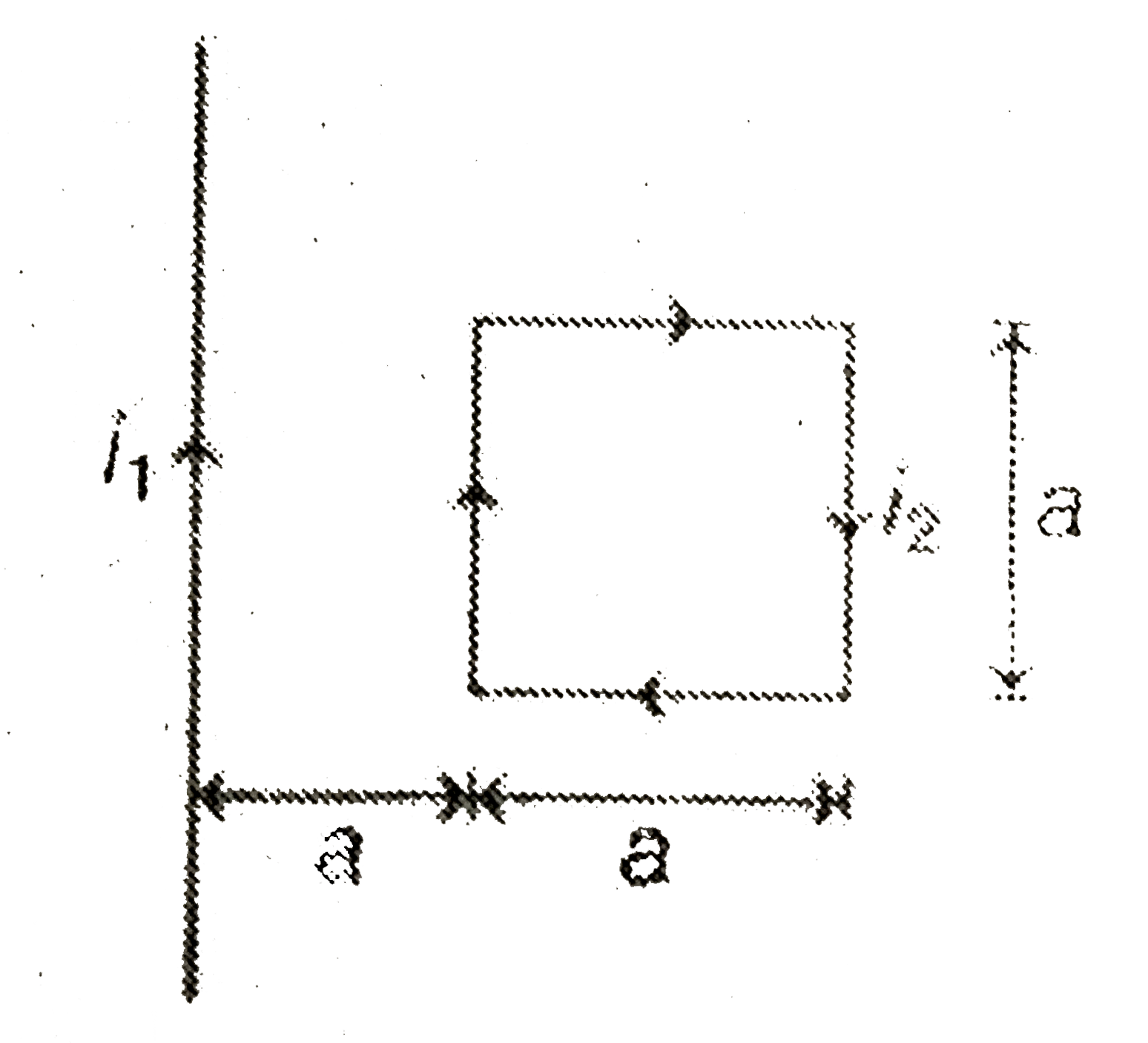 Aμ02πi1i2rBμ02πi1i2loge2Cμ02πi1i2r2DZero
Aμ02πi1i2rBμ02πi1i2loge2Cμ02πi1i2r2DZero
A square loop of side a is placed in the same plane as a long straight wire carrying a current i. The centre of the loop is at a distance r from wire where r>>a. The loop is moved away from the wire with a constant velocity v. The induced e.m.f in the loop is
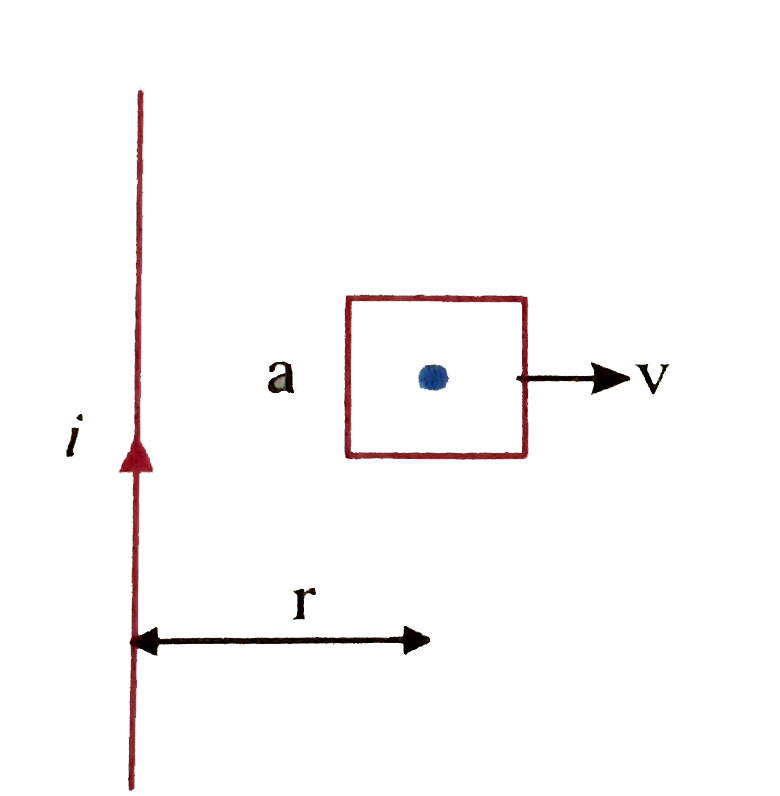 View Solution
View SolutionA square loop of side a is placed at a distance a length away from a long wire carrying a current I1 . If the loop carries a current I2 as shown in the figure . Then the nature of the nature of the force and its amount is
 View Solution
View SolutionIn Fig. 30-45 , a rectangular loop of wire with length a= 2.2 cm, width b = 0.80 cm, and resistance R = 0.40 mn is placed near an infinitely long wire carrying current i = 4.7 A. The loop is then moved away from the wire at constant speed v = 3.2 mm/s. When the center of the loop is at distance r = 1.5b, what are (a) the magnitude of the magnetic flux through the loop and (b) the current induced in the loop?
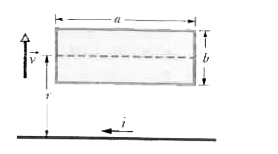 View Solution
View SolutionA rectangular loop of wire shown below is coplanar with a long wire carrying current I.
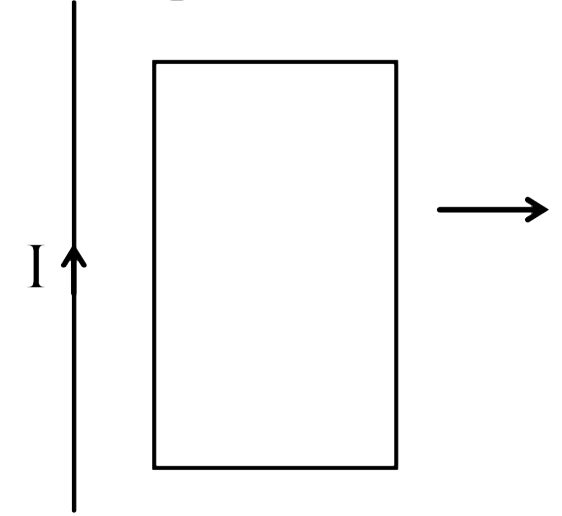 The loop is pulled to the right as indicated. What are the directions of the induced current in the loop and the magnetic forces on the left and the right sides of the loop View Solution
The loop is pulled to the right as indicated. What are the directions of the induced current in the loop and the magnetic forces on the left and the right sides of the loop View SolutionA current carrying squre loop is placed near an infinitely long current carrying wire as shown in figure . The loop torque acting on the loop is
 View Solution
View Solution

